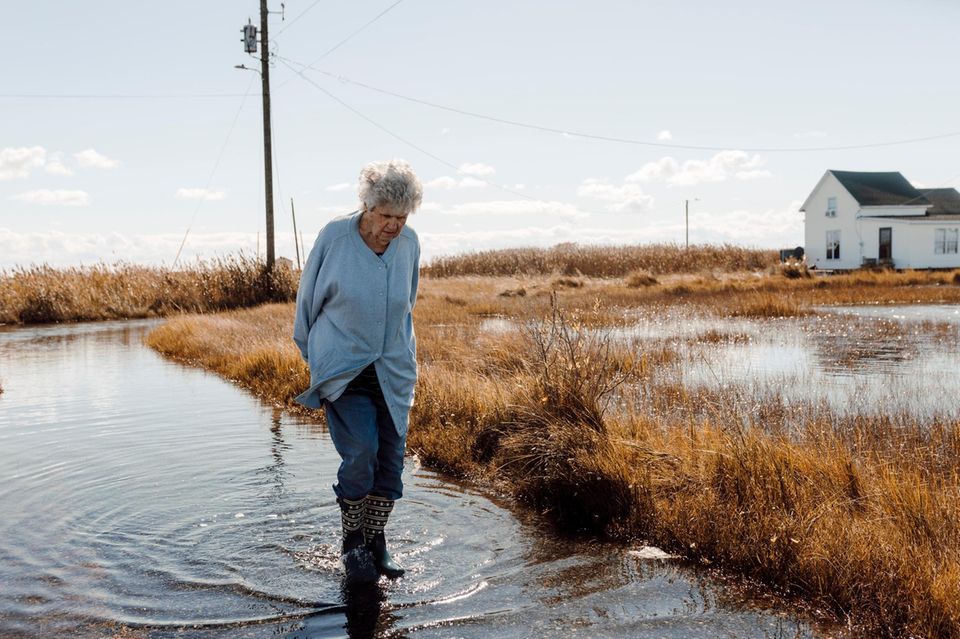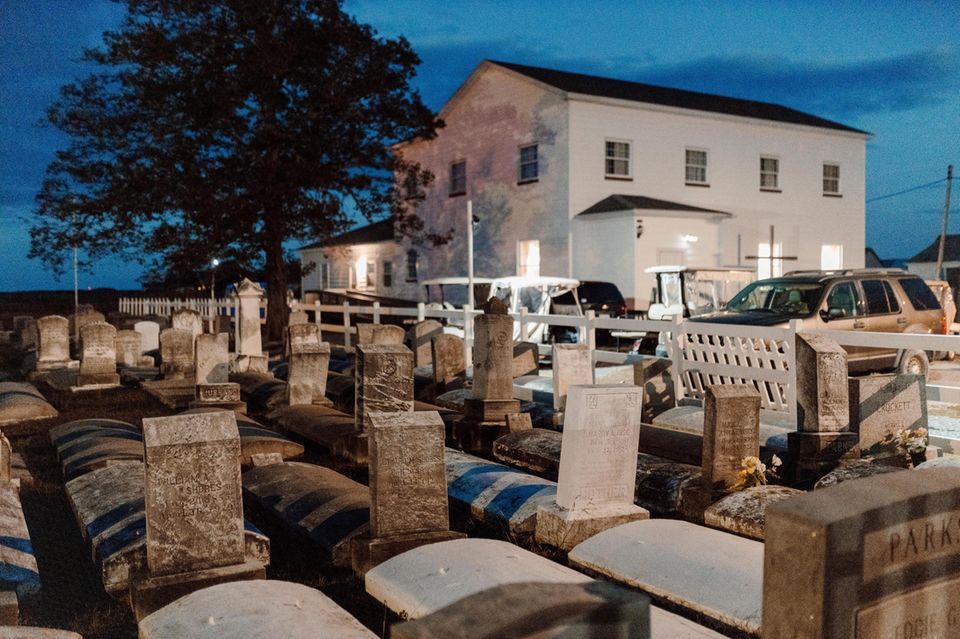The residents of Tangier Island off the coast of Virginia do not believe in man-made climate change – they believe in Donald Trump’s rescue. He is on the verge of a comeback when the primaries begin on Monday in Iowa.
By David Signer
At midday the tide comes in and floods the island. The front gardens turn into ponds and there is no way through the streets anymore. If you don’t wear boots, your feet will get wet. Many houses are on stilts or have been raised, otherwise the living rooms would be flooded. In front of the buildings there are ramps for the motorcycles and golf carts that people use to get around. There are hardly any cars.
Tangier Island, with around 450 residents, is located in the Chesapeake Bay in the US state of Virginia – and is slowly sinking into the water. No point is higher than one and a half meters above sea level, and the area of the island is becoming smaller and smaller. At the beginning of the 20th century there were 600 hectares, now there are just over 300, with only 35 still habitable. More and more area is becoming marshland, and the previously widespread agriculture has become impossible due to the salinization of the soil. Every hurricane, like “Sandy” in 2012, destroys more parts of the island and can mean the end for the residents.
Tangier from the air: More and more of the island is becoming uninhabitable marshland
© Jonas Kako/NZZ
Scientists and reporters wrote about the “first climate refugees in the USA” when the community’s fate first hit the media years ago. And Tangier Island is known for something else: When you arrive by boat, the first thing you notice are all the Trump flags on the harbor with the slogan: “2024 – I’ll be back!” Tangier Island is also a Trumpist island. And that has consequences.
Rudy Shores wades through the lawn in front of his house, which has turned into a swamp. Like most people on Tangier Island, the 70-year-old was born here and was a crab and oyster fisherman all his life, a so-called waterman – a man who lives from and with the water. “Now I only go out with my son every now and then,” he says.
Shores greets a woman in rubber boots who shuffles past on the street. 75-year-old Brenda Laird is in a bad mood. “This damn flood,” she complains. She talks about her husband, who was buried here. “One day, during the flood, his coffin was washed out of the ground. So I had him cremated, even though he never wanted it. Now the urn is in my living room – in the dry. I moved here for his sake. I would have been there for a long time “I’ve gone back to the mainland, but my sons live here as Watermen.”
Brenda Laird curses the water. She would have moved away long ago, but stayed because of her sons
© Jonas Kako/NZZ
The fear is omnipresent
Many graves are not in a cemetery, but in front of the families’ houses. They are also covered in concrete. This means they are better protected from the water and can be monitored so that macabre surprises don’t suddenly arise and the grandfather’s skeleton drifts through a flooded street.
Graves on the island are filled with concrete so that they are not washed away by the water
© Jonas Kako/NZZ
The issue of flooding and the fear that the island will eventually disappear completely are omnipresent here. In the 1940s, Tangier Island had a population of 1,000, but now the population is less than half. According to a report in the specialist magazine Nature, it could be uninhabitable in 25 years.



